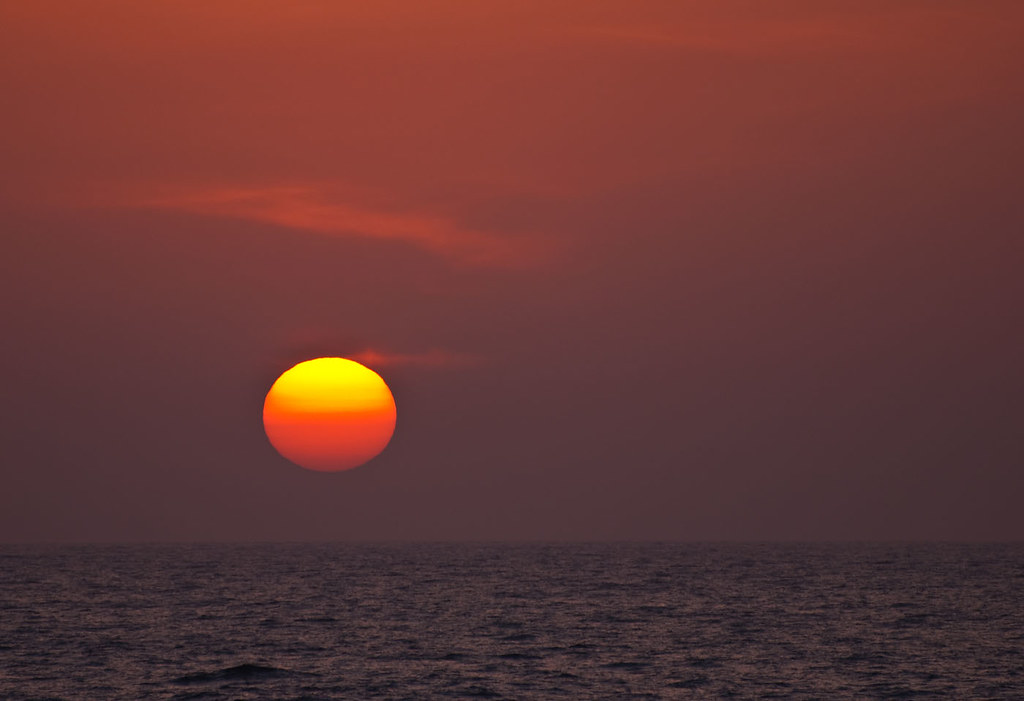Discovering Dwejra: 11 extraordinary reasons why it should be a UNESCO World Heritage Site
Though Dwejra used to be known primarily for the now-no-longer Azure Window, this was merely the tip of the iceberg. The dramatic, craggy site in Gozo boasts other features whose importance far exceed that of the collapsed arch.
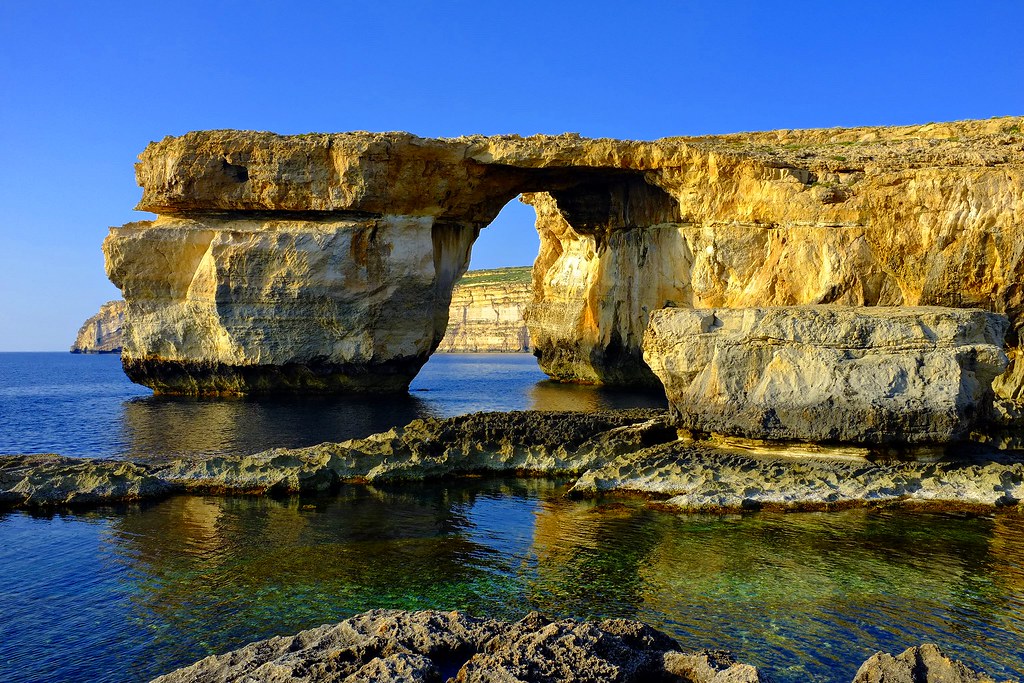
“Dwejra is a site of immense geological, ecological, and astronomical importance, not only locally but, on many counts, on an international scale,” says Joseph Caruana, a lecturer and researcher of astrophysics at the University of Malta, an astronomer, a diver, a photographer and a Gozo resident enamoured with the importance of this particular location."
“It features some unique geomorphological features such as a high concentration of sinkholes; it hosts a number of different organisms including some species endemic to the Maltese islands; and it is the best place left on the Maltese archipelago from where to carry out astronomical observations due to relatively low levels of light pollution. Moreover, it hosts a number of interesting archeological remains.”
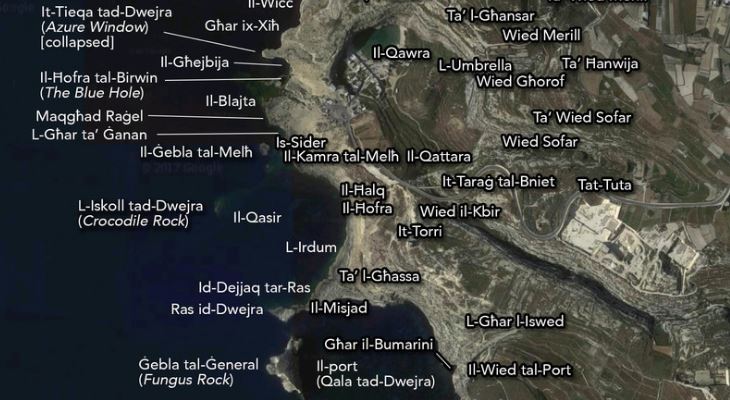
J. Caruana, adapted from A. Camilleri (2006), It-toponomastika t'Għawdex: id-Dwejra u l-inħawi ta’ madwarha, L-Imnara, 8, (3), 124-131. (Photo: Google Maps / Google Earth.)
Dwejra would classify as a mixed site for UNESCO's purposes, therefore possessing a mesh of natural and cultural features. It is, indeed, of extraordinary significance.
Dwejra has extraordinary geological features
Dwejra is a wonderful testimony to the ever-changing coastal landscape over even relatively short periods of time. The forces of nature have shaped a beautiful topology with a variety of geomorphological features, including sinkholes. The area allows one to observe the entire sequence of rock formation from fissures to caves to tunnels, arches, and stacks. Meanwhile, underwater, one can find various caverns, chimneys, arches and swim-throughs.
1. There are four sinkholes right next to each other
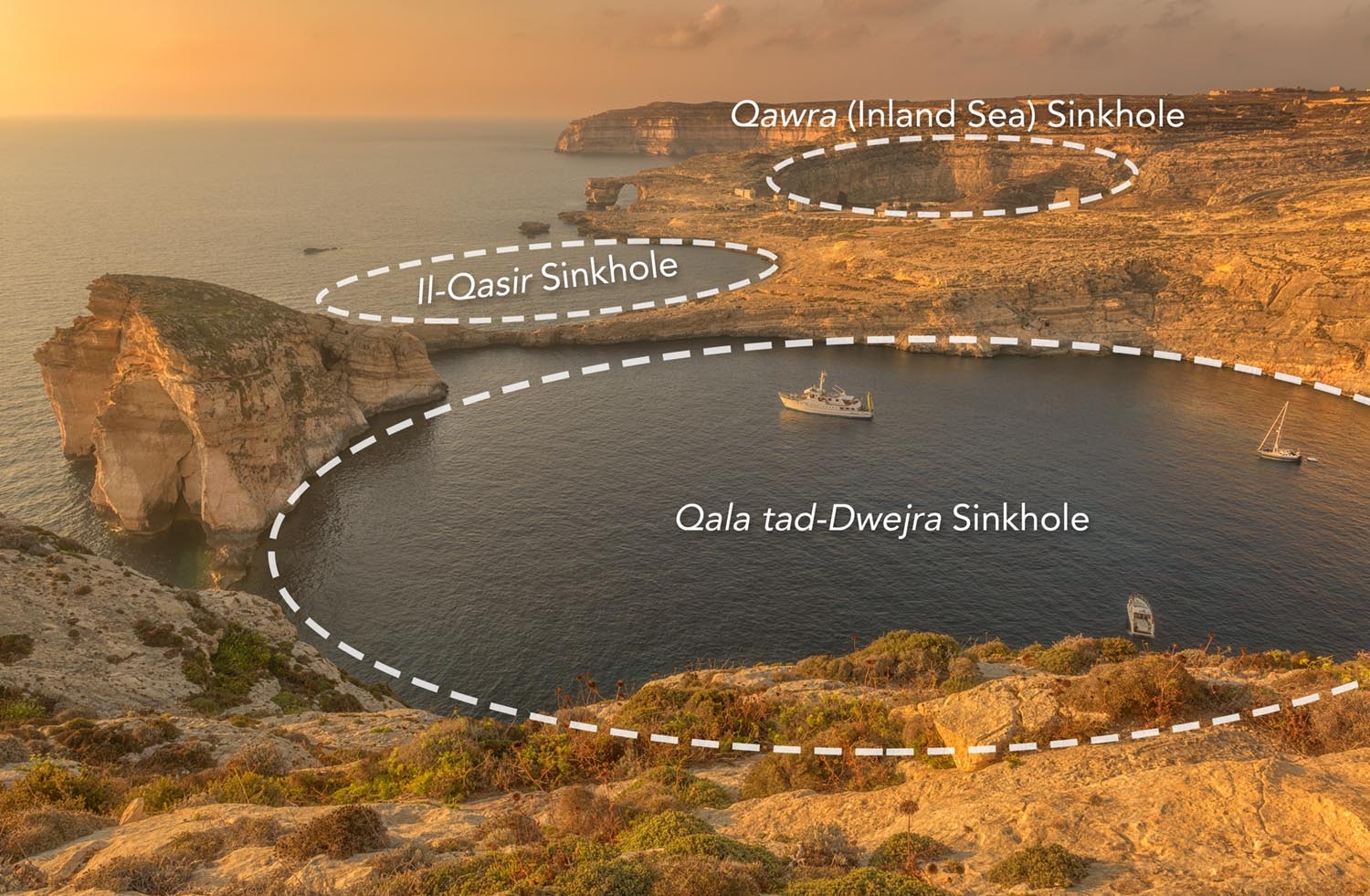
Joseph Caruana
'Viewed from above, Dwejra’s sinkholes are clearly indentifiable: Qala tad-Dwejra, Il-Qasir, Qawra (Inland Sea), and the smaller Blue Hole. This high concentration of sinkholes next to each other makes Dwejra a site of unique importance.”
2. The Inland Sea is spectacular
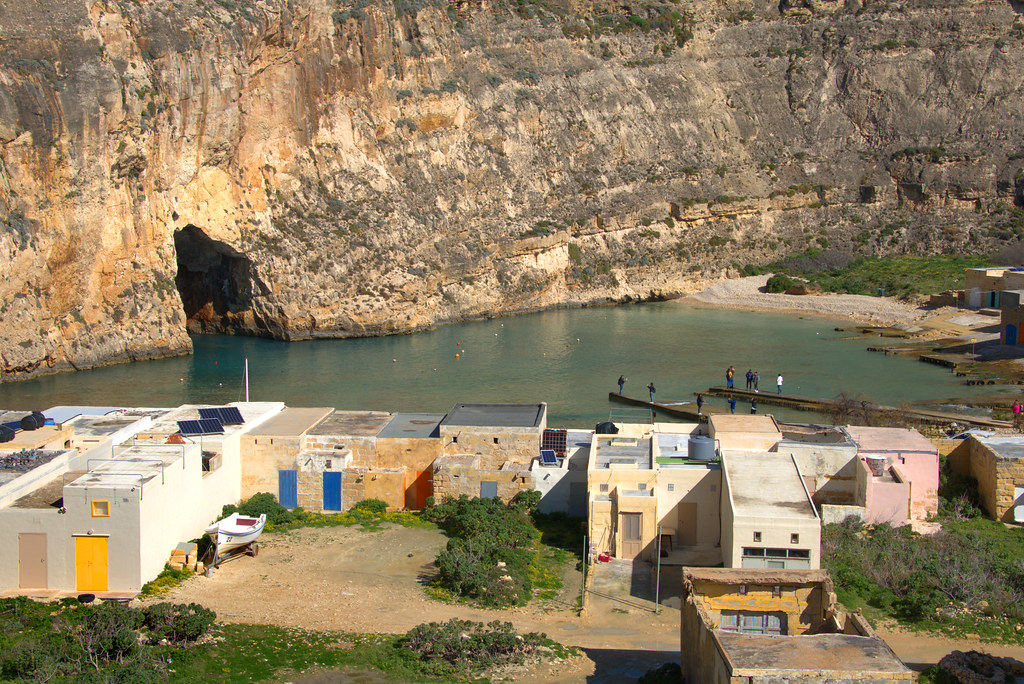
One of these sinkholes is particularly interesting from a geomorphological point of view. It meets the Mediterranean through a tunnel arch 80m long, forming an inland sea measuring between 300m and 400m in diametre. The tunnel is also a popular diving location.
3. The Blue Hole is a divers’ delight
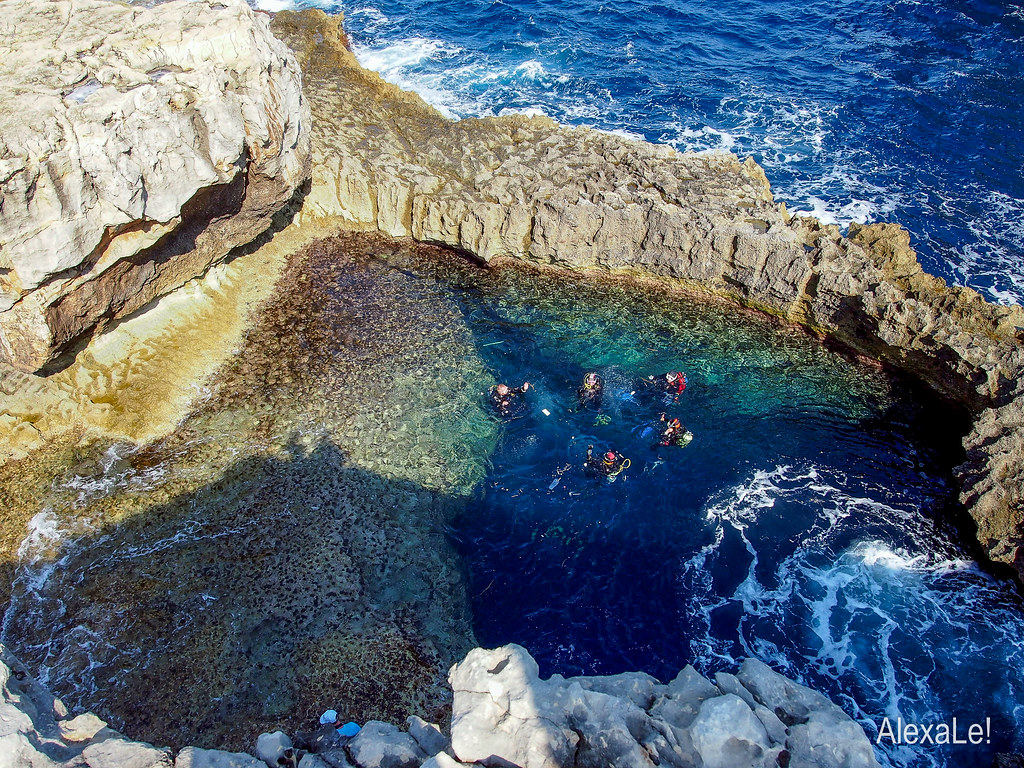
The Blue Hole is both a sinkhole and an arch. Measuring about 10 metres in diameter with its collapsed north-west wall now a Golden Cup Coral-adorned arch leading to the open sea, the Blue Hole is also one of the most famous diving sites in the Mediterranean; Dwejra offers some of the best diving in Gozo. There is also a cavern in the south-east wall directly opposite the arch, at the bottom of the hole. at 16 metres.
4. The Azure Window is a trip through geomorphological history
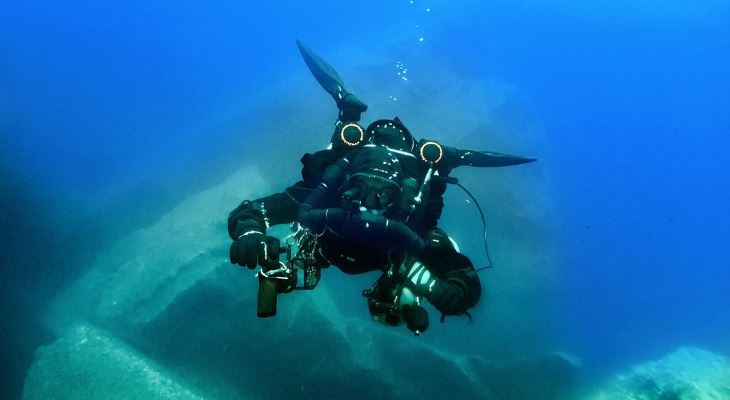
Joseph Caruana
Previously a natural arch and now a dive site after its collapse on 8th March 2017, the ruins of the Azure Window are of immense interest to geoscientists. This coastal arch started off as a fissure in the rock, widening to a cave, evolving into a window-like shape and then to a curved arch. Due to erosion and wave action, the pillar itself collapsed the entire arch, leaving no stack. It will eventually become a natural reef.
Dwejra is home to several endemic species
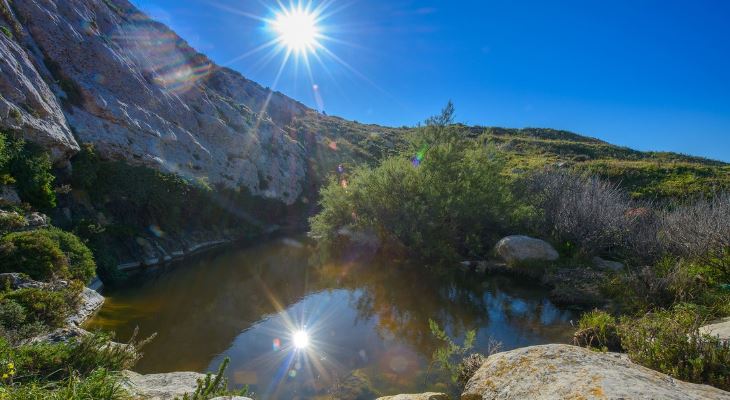
Joseph Caruana
Dwejra offers diverse habitats that host a number of species, some of which are endemic to the Maltese islands. Dwejra is also home to il-Qattara, a rare freshwater pool that’s a haven for a wonderful diversity of flora and fauna. Go to Dwejra by night to listen to the eerie cry of the shearwater, a bird which lives on the cliffs. Underwater, Dwejra Bay is home to a sea grass species known as posidonia meadows (as well as many other organisms), which led to it being designated a Marine Protected Area.
5. The Fungus Rock is a stack with great significance
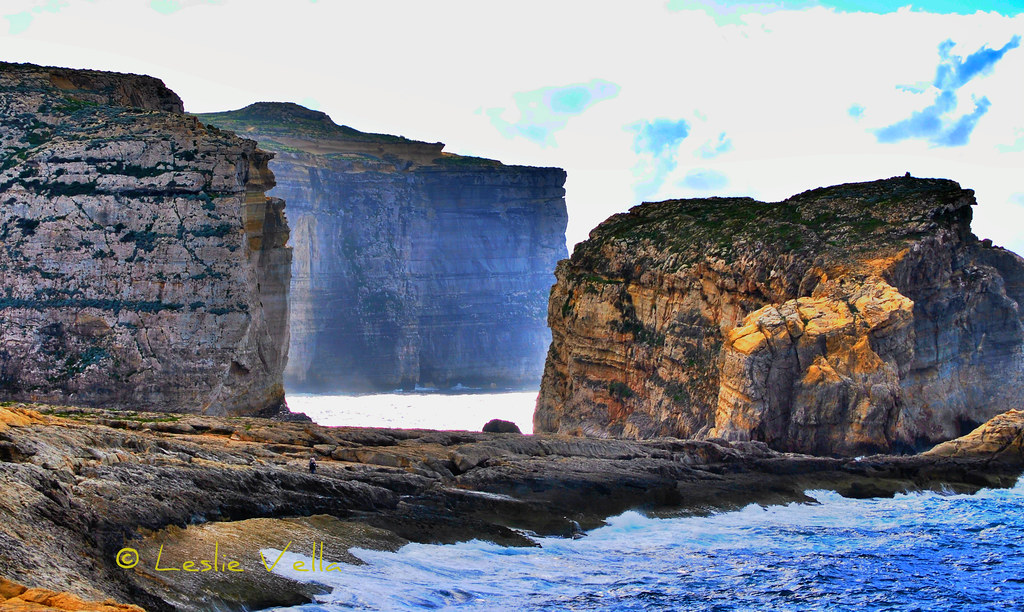
The Fungus Rock is the remaining stack left after the collapse of an arch that connected it to the mainland. During the occupation of the Knights of Malta, it was protected for its prized medicinal plant that was used as a styptic dressing for wounds and a cure for dysentery.
6. It is home to an endemic lizard
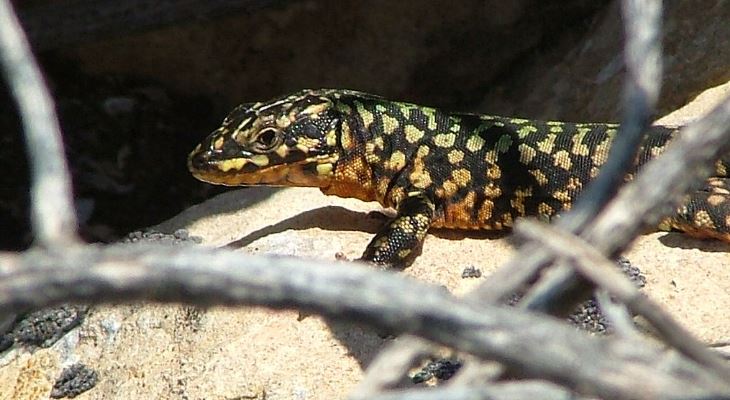
Podarcis filfolensis ssp. Generalensis by Arnold Sciberras
In Dwejra, particularly on the Fungus Rock, one can find a lizard subspecies that’s unique. Podarcis filfolensis ssp. Generalensis are only to be found here! That’s very rare and special indeed!
7. It is where endemic flowers grow
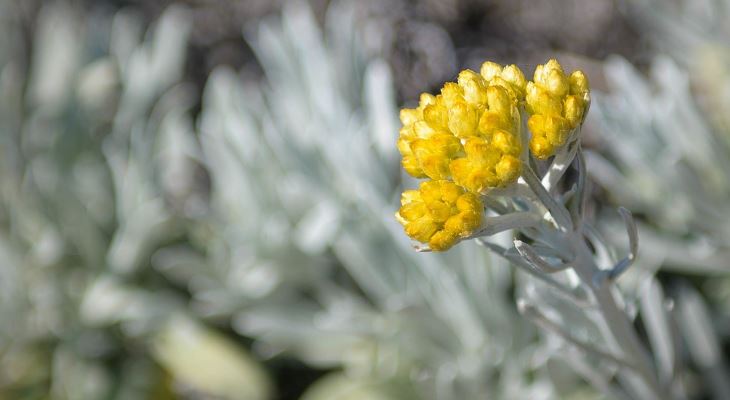
Maltese Everlasting by Joseph Caruana
Dwejra hosts the only substantial population of the protected endemic plant species Maltese Everlasting (Helichrysum Melitense). Even the Maltese Salt Tree (Darniella Melitensis), The Maltese Stocks (Mathiola Incana SSP. Melitensis) and Maltese Sea-Chamomile (Anthemis Urvilleana) grow here and are protected by law.
Dwejra has a rich and amazing history
While the natural attractions at Dwejra are the most remarkable and well-known, the area also possesses historic interest. Dwejra was one of the earliest known human settlements, dating from the Neolithic period some 7,000 years ago, through the Punic period until 5 AD.
8. Neolithic Caves
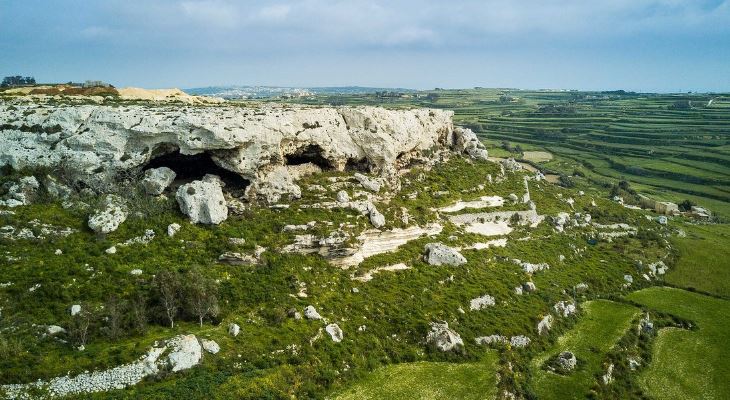
Joseph Caruana
The caves atop the plateaued hill of Għajn Abdul are a barely known national treasure, in that they were some of the very first dwellings on the Maltese Islands. Stentinello pottery unearthed from Għajn Abdul indicate that Gozo had settlers even before Malta!
9. Cart Ruts
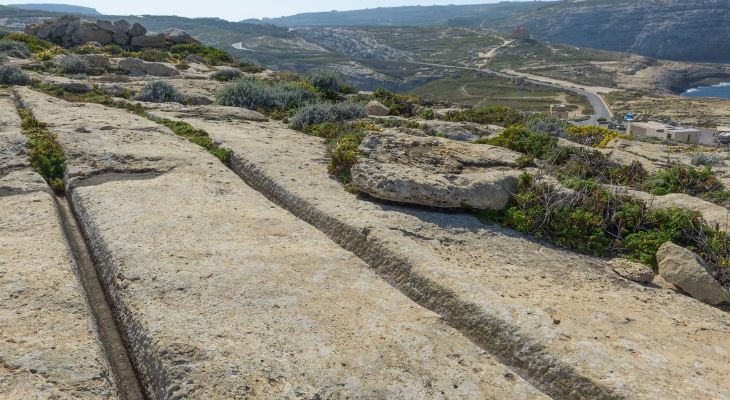
Joseph Caruana
The mysterious parallel grooves carved into the ground known as cart ruts, which are found in several areas around the Maltese Islands, are also to be found in Dwejra. The enigma surrounding their development increases in Dwejra, where there is no evident location identified for potential transport, the most accepted reason for their formation. Added to that, here are six pairs set in globigerina limestone. Moreover, the ruins of a circular construction are evident close to the cart ruts (top left in the image).
10. Punic Temple
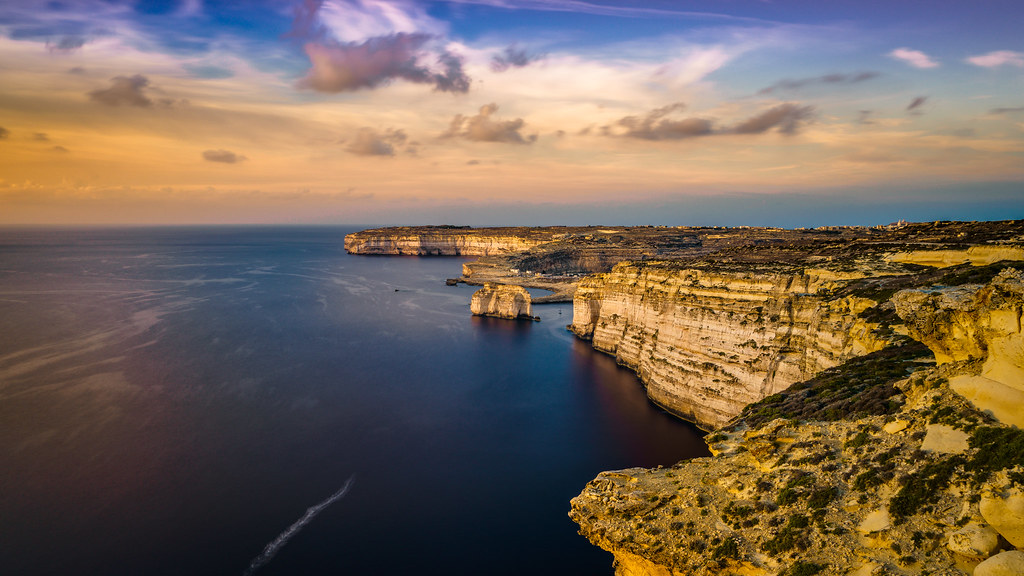
Better-known as Ras il-Wardija Temple, this rectangular chamber is evidence that Wardija was inhabited even after the Bronze Age, during the Punic Period until at least 5 AD. This spot offers breathtaking views of the cliffs and of Fungus Rock, Dwejra Bay and Qawra.
11. Dwejra Tower
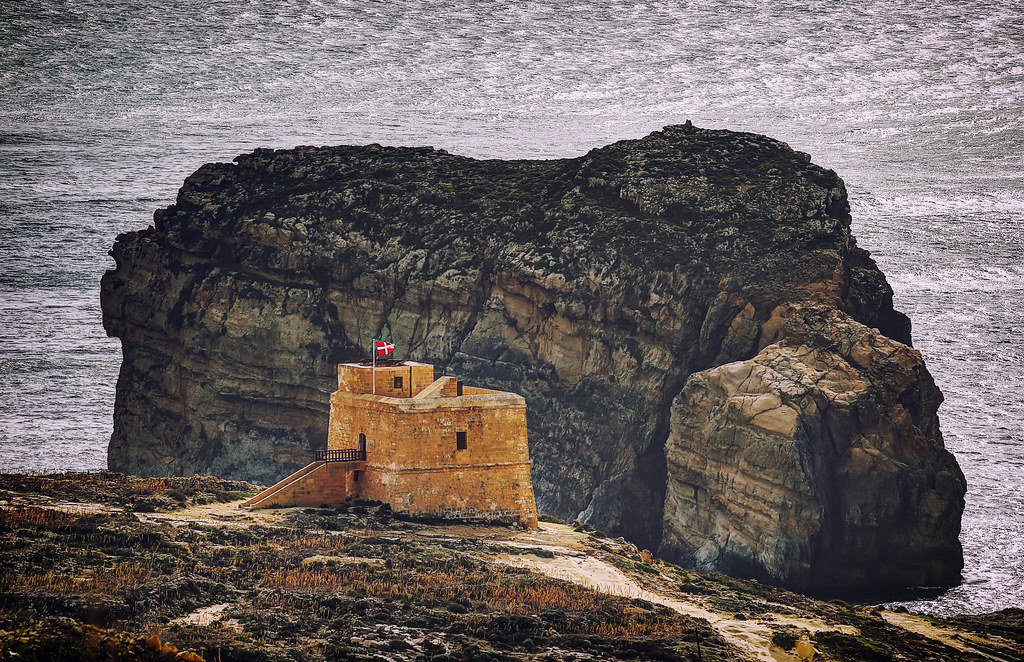
More recently, Dwejra Tower was the last of the Lascaris watch towers to be built by the Knights of Malta. Dating from 1652, it also acted as an outpost to guard against unauthorised access to the Fungus rock, which, as aforementioned, was prized for a special medicinal plant that grew on it.
That’s more than two handfuls of reasons why Dwejra should be nominated a UNESCO World Heritage site. This single location tells the history of an island, its flora and fauna and its first inhabitants. Now that’s quite special!
BONUS
And just in case all of that was not enough, Dwejra is also an amazing sunset spot!
